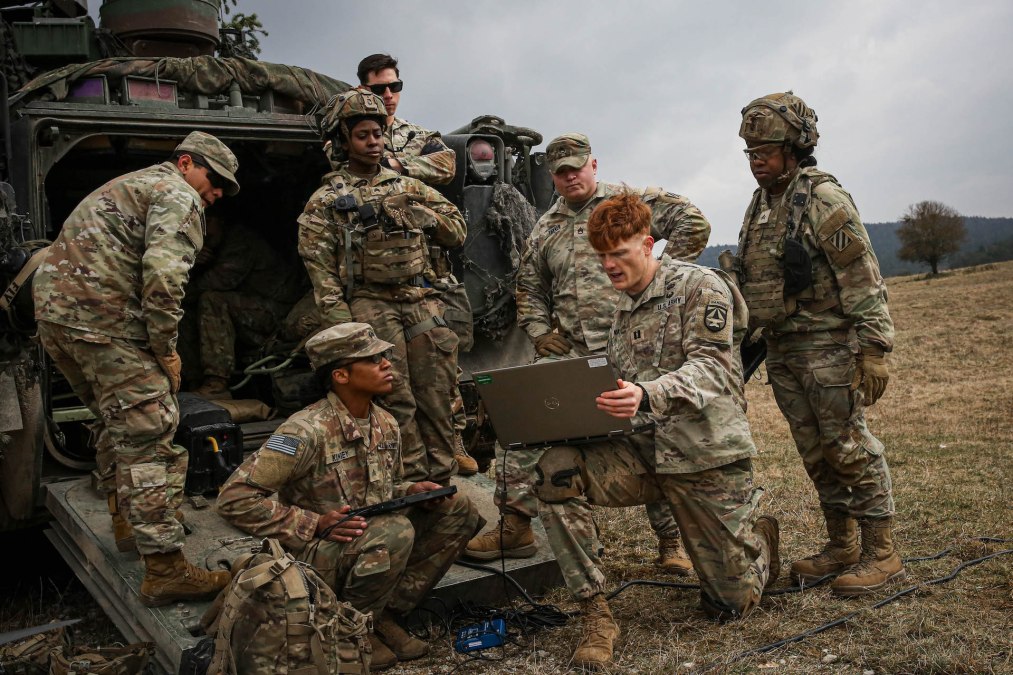Army lays out strategy for new $1B contract vehicle for modern software development

The Army has developed a strategy for a new contract vehicle for software that it estimates will be worth more than $1 billion over a 10-year period of performance.
The service’s vision, outlined in a special notice published on Sam.gov seeking industry feedback, was released less than three months after Army leadership announced a new policy to codify changes in how the department develops and manages software.
“The Army’s contracting strategy is to award a new Multiple Award IDIQ contract vehicle in a streamlined manner to the most qualified contractors, resulting [in] a flexible contract vehicle with the ability to rapidly award Task Orders for Modern Software Development requirements across the Army,” according to an appendix to a request for information posted May 23.
Task orders “will feature evaluation criteria designed to demonstrate the Offeror’s technical capabilities, availability of resources to begin work immediately, and enable task order award rapidly. Offerors are advised that Task Order solicitations may also feature qualifying technical demonstrations and/or challenges,” it noted.
The department anticipates having a total of 10 vendors on the contract vehicle at the IDIQ level throughout the period of performance with spots reserved for small business participation.
The Army signaled its intent to circumvent vendors whose performance isn’t up to snuff and to add new ones as needed.
“The Government intends to incorporate flexibility into the ordering process that allows for the ability to award a Task Order to the next highest rated offeror should the Awardee fail certain objectives over the course of a planning interval (8-26 weeks depending on sprint cadence). Performance metrics and objective feedback will be tracked and communicated across every sprint,” per the notice.
“It is in the Government’s best interest to ensure there is an adequate number of Contractors with the capacity and capability to compete for task orders to meet the Government’s mission requirements, and therefore the Government will perform on-ramping procedures as necessary. The Government anticipates utilizing multiple approaches to identifying new highly rated contract holders to keep pace with changes to the marketplace. MA IDIQ contract holders who have high rates of unsuccessful TO proposals and/or high no-bid rates may be subject to off-ramping,” the RFI stated.
Under the strategy, task orders could include development of a custom software solution; customization, integration, or modification of a software solution; software-as-a-service enablement; or software security and hosting modernization.
Response times expected from industry will depend on how task orders are classified, according to the service. The current plan envisions 5-10 business days for “simple” ones and 15-25 business days for complex ones.
The Army also aims to leverage modern software development practices, such as continuous integration/continuous delivery and DevSecOps.
The ceiling for the IDIQ is expected to exceed $1 billion, according to the notice.
Responses to the RFI are due June 10.
Software is a key element of the Army’s push to modernize its enterprise, from back-office functions to warfighting at the tactical edge. It’s also on the hunt for new capabilities as it prepares for potential conflicts with high-tech foes.
“Software is essential to modern military operations. It is a key component in the Army’s weapons, business, and training systems and is embedded into the enterprise processes that make the Department function. These systems enable the Army to detect and track adversaries, protect operations from cyber threats, and improve the accuracy and effectiveness of decisions and actions. Software drives improved outcomes and effectiveness in our missions and operations. Consequently, the Army’s ability to rapidly develop, deliver, and adapt resilient software is critical to achieving a competitive advantage over adversaries,” the special notice states.






